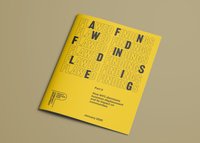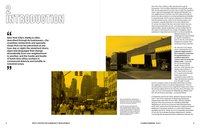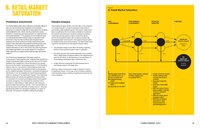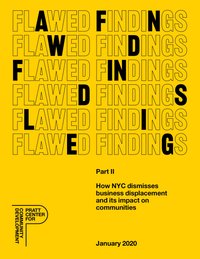
This report examines the only tool New York City currently has for assessing business displacement risk: the City Environmental Quality Review process (CEQR) and the Technical Manual that guides this assessment.
Pratt Center’s in-depth review found that the CEQR Manual glosses over displacement pressures to such an extent that a finding of “significant impact” is virtually impossible. In reviewing 14 recent environmental review documents for major development projects spanning from 2004 to 2019, we found no instance where the City determined there would be a significant impact from business displacement. We identify multiple flaws in the Technical Manual that allow this to happen in rezoning after rezoning, and outline a series of strategies the City should take to effectively measure and address business displacement risk and the effects major development has on communities.

Neighborhood businesses are critical community assets, providing essential services, employment and entrepreneurial opportunities, and creating a sense of place, familiarity and security. While the periodic opening and closing of businesses is an inescapable fact of city life, what communities find unacceptable is government intervention or public policy (or lack thereof) that leads to widespread displacement of companies that collectively form a core part of a community’s identity, provide essential goods and services to area residents and workers, or form an ecosystem that adds vitality to particular business sectors.

Findings
An analysis of the CEQR Technical Manual’s guidance surfaces a methodology so flawed and full of loopholes that arriving at a positive finding is virtually impossible. We identified flaws broken down into 5 main categories. The CEQR Technical Manual’s guidance on indirect business displacement:
Erodes the meaning of displacement
Fails to regard the neighborhood by failing to describe the neighborhood
Divorces impact on businesses from impact on workers and economic policy
Fails to require metrics or other substantiation for conclusions Ignores potential disparate impact by race or ethnicity.
These flaws lead to inadequately informed decision-making, which fails to correctly identify the true cost of government action or opportunities for mitigation.
Recommendations
A revised CEQR approach alone is not the sole answer to honestly addressing business risk and the effects major development has on communities, but it is one of several critical steps to tackling this urgent need. To reform CEQR and advance more informed decision-making, our report recommends that:
NYC should convene a Task Force of technical and economic development experts and other stakeholders to revamp the CEQR Technical Manual’s approach to evaluating business displacement.
NYC should conduct a citywide business existing conditions analysis and use it to inform economic development policy.
NYC should undertake and support planning for commercial and industrial districts as part of any substantial rezoning.
NYC should assess the success and value of the myriad of business assistance and relocation programs stemming from rezonings.

Downloads
